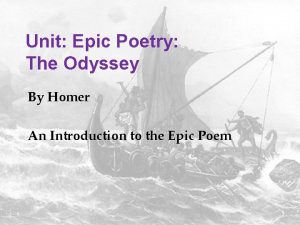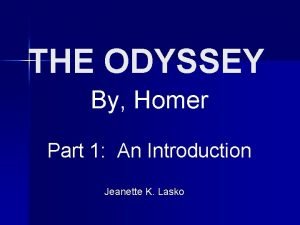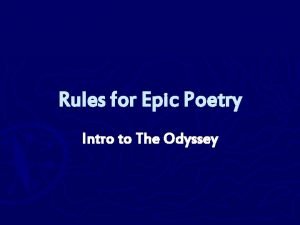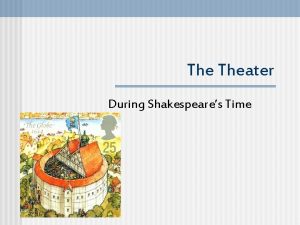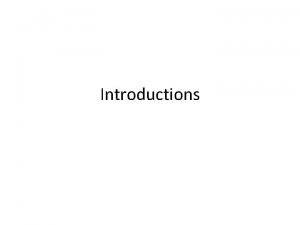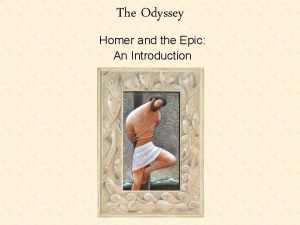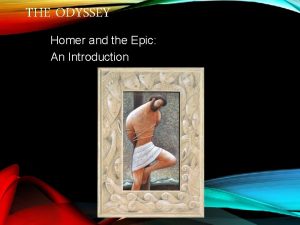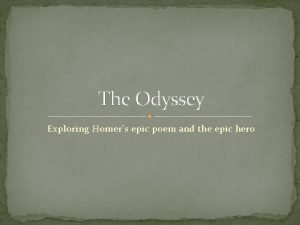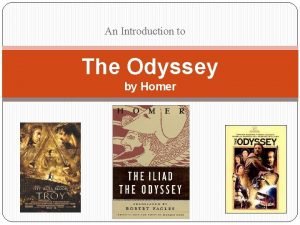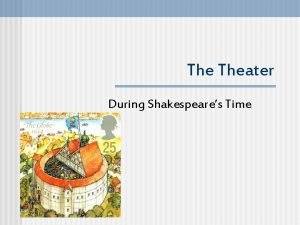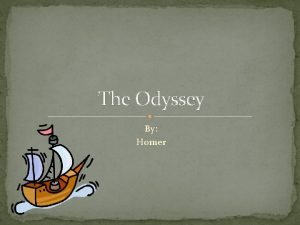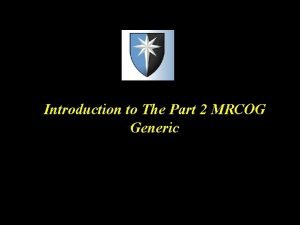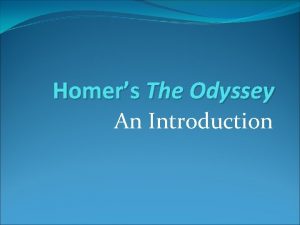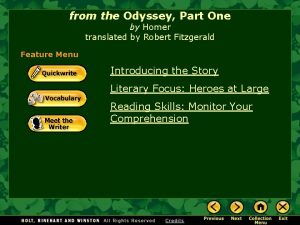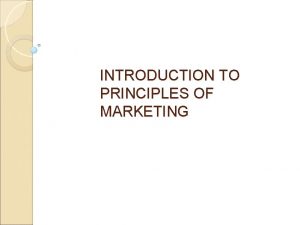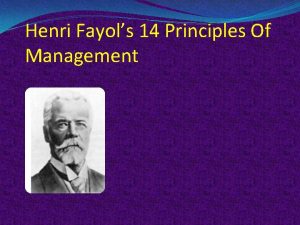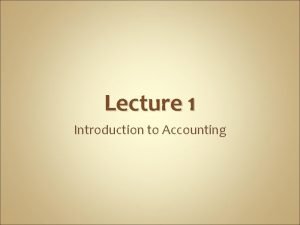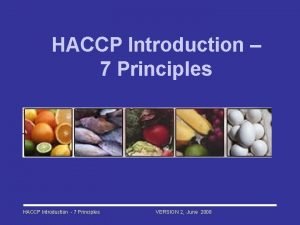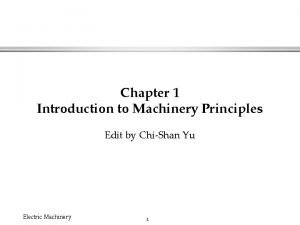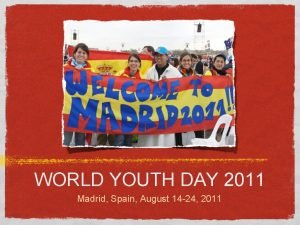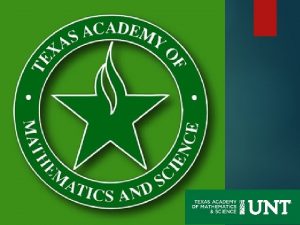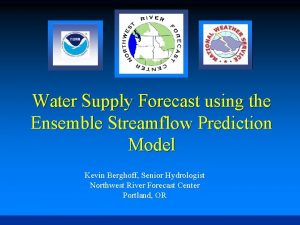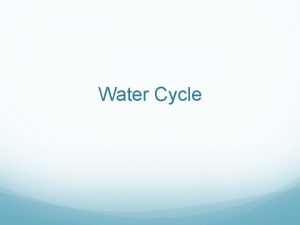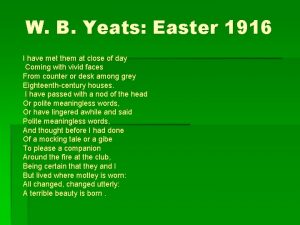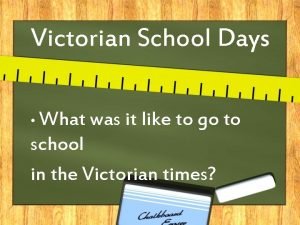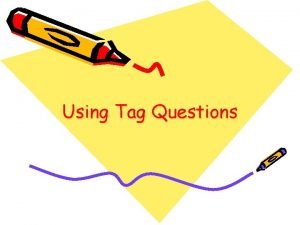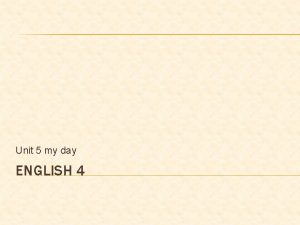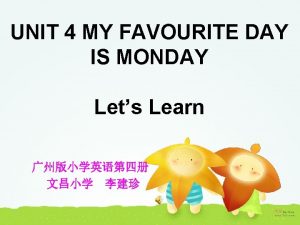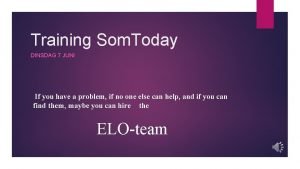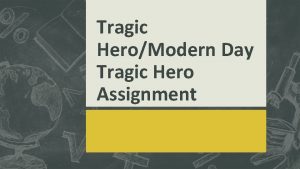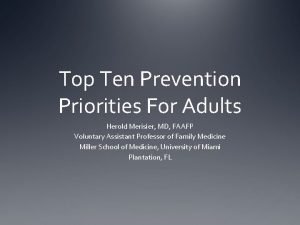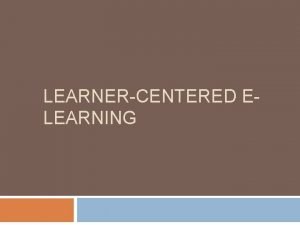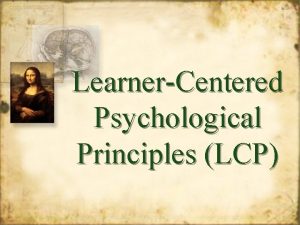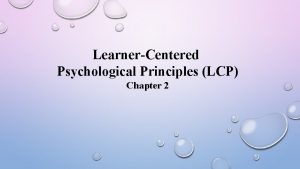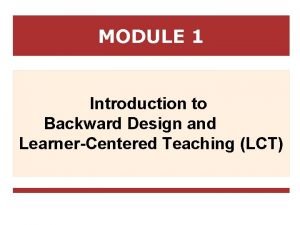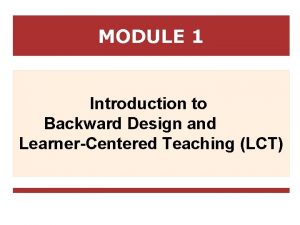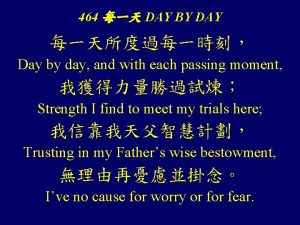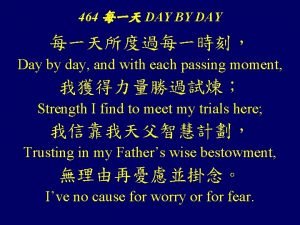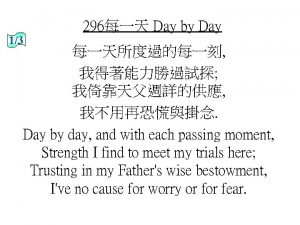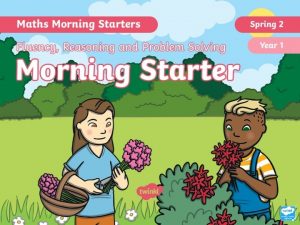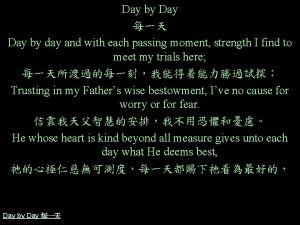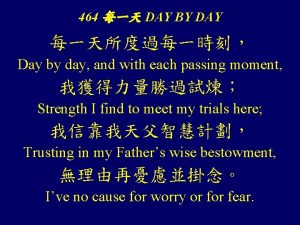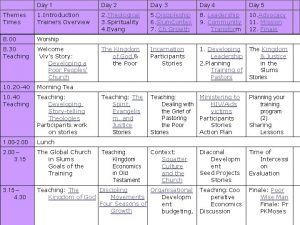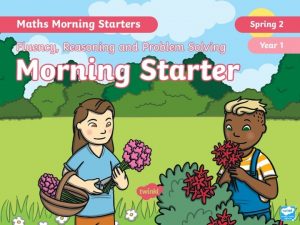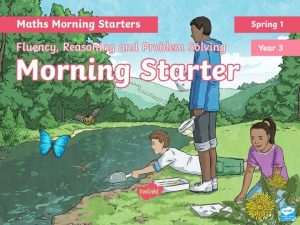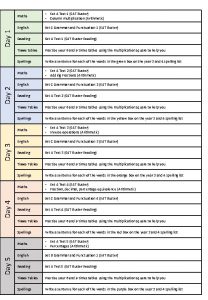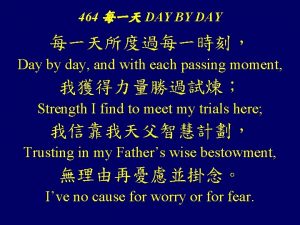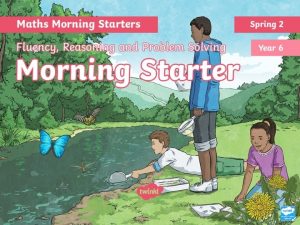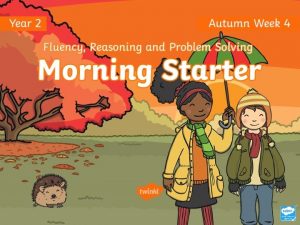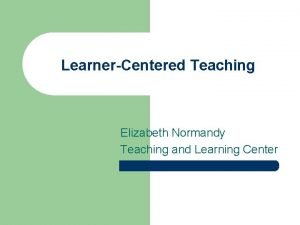LearnerCentered Principles An Introduction Day 1 Part 1




























































- Slides: 60

Learner-Centered Principles: An Introduction Day 1

Part 1: Introductions and Understandings 9 AM to 10: 45 AM

Introductions - Participants Disciplines and desired outcomes

Pre-assessment - ECU

Introductions Colleen Carmean Patricia Mc. Gee Renee Hogue Adrianna Lancaster

Definition: learner-centered Learner-Centered: Creating instructional practice and learning environments that encourage deep, lasting and successful learning. This workshop series seeks to define, explore, discuss and model new practices, tools and conditions that lead to meaningful learning; to identify and implement teaching practices that create such conditions; and to find evidence that supports the design of effective teaching and learning within these principles.

From the literature – learner-centered teaching encourages deeper learning Active Social Contextual Engagement Ownership http: //www. west. asu. edu/ccarmean/learningtable. htm

Learner-centered vs. Studentcentered: What does it look like?

Learner Student

A shift Student Learner Passive Active Directed Director Abstracted content Real world illustrations Knowledge as pre- Knowledge as formed Few choices Assessed solely by instructor Knowledge is “pure” constructed Frequent choices Assessed by self, peers, and others Knowledge is personalized

Example: Student-centered Learner-centered Everyone reads chapter 1 and answers reading questions. 1 and completes one of following: Reviews provided video and identifies chapter concepts depicted in the video Teams take turns providing study questions for each chapter – or create quizzes Creates challenge for other students to solve

BREAKOUT Select one of the following and come up with a way to make it learner-centered Taking a test Completing homework Writing a paper Reading course materials Memorizing material One person will report

Learner-centered principles – Teaching Activities that ensure the student is engaged, involved and making an investment of time and energy in their learning: http: //www. west. asu. edu/ccarmean/learning/activities. htm

Looking for LCP in course designs

BREAKOUT 1. In groups, review provided syllabus 2. Where are there examples of learner-centered design? 3. What might be changed towards more learnercenteredness?

One-minute Reflection & Summary

Part 2: Where Theory Meets Practice 11 AM to Noon

Evidence from the disciplines

Disciplinary Foci: Hard Sciences Hard Natural Sciences Natural: • Logical reasoning. • Testing of ideas in linear form of argumentation. • Reliance on facts, principles, and concepts. Applied: • Problem-solving and practical skills • Emphasis on integration and application of existing knowledge Hard Applied Sciences (White & Liccardi, 2006)

What does the learner need?

Learner Preference Hard Natural Sciences • Tutorials • Reference materials • Objective tests • Support the mastery of facts, principles and concepts • Quantitative, closed assessments Hard Applied Sciences (White & Liccardi, 2006)

Disciplinary Foci: Soft Sciences Soft Pure • Broad command of intellectual ideas. • Emphasis on creativity in thinking and fluency of expression. Applied: • Emphasis on personal growth and intellectual breadth. • Development of reflective practice and lifelong learning. Soft Applied (White & Liccardi, 2006)

What does the learner need?

Learner Preference Soft Pure • Discussions • Role play and games • Access to open web • Access to a variety of resources • Support the development of argumentation skills and critical thinking • Qualitative, Open Soft Applied (White & Liccardi, 2006)

Developing expertise: The Novice-Expert Continuum

If you are the expert… How are your students different?

Learners as novice Focus on discrete details Capture empirical information Focus on the use of formulas and previously learned strategies Operate at lower levels of thinking Caveat: Learners are not novices at

Novice-expert continuum Routine Expertise UNDERGRADUATE Discrete declarative knowledge Rely on principles Identify patterns Adaptive Expertise GRADUATE Internalized principles Switches perspectives POST-GRADUATE Complex problem solving Rely on conditionalized connections Tests, papers, experiments, projects, internships, fellowships, mentoring

Under what conditions do your novice learners do best?

Ideas for developing expertise Move from concrete/discrete to generalized patterns Assess degree of expertise Provide rules that inform application of learning in real world Provide opportunities for learners to aggregate achievements, collect evidence, apply course learning outside of class – Practice, Practice!

Describing the digital learner: facts and fiction • Digital Native, Digital Learner • Gen X, Gen Y • Media Generation, Millennial Generation • “there are no digital natives here” – Michael Wesch • Everyone today needs to be a skilled digital learner st

Information Literacy? Determine the extent of information needed Access the needed information effectively and efficiently Evaluate information and its sources critically Incorporate selected information into one’s knowledge base Use information effectively to accomplish a specific purpose Understand the economic, legal, and social issues surrounding the use of information, and access and use information ethically and legally

BREAKOUT What do we know works in teaching college level adults? Each group reports 2 practices that work

Lunch! 12 to 1 PM

Part 3: What does LCP mean to my teaching? 1 to 2: 00 PM

Learner assessment within LCP

Taxonomy and pedagogy Cognitive Developmental

Focus on learner evaluate analyze apply understand remember Bloom’s Taxonomy? Focus on measure of learning create

Bloom’s & Processes Remember Recognizing, recalling Understand Interpreting, classifying, comparing, summarizing, explaining Apply Executing, implementing Analyze Differentiating, organizing, attributing Evaluate Checking, critiquing Create Generating, planning, producing

Bloom’s & LCP Level Possible Applications Remember Individual Understand organizational systems Selection of context Choice of examples/data Defense of POV Authorship Apply Analyze Evaluate Create

What Students Know transfer of learning What students can do Facts Procedures Principles Strategies Critical thinking Problem finding/solving Creative thinking Typically measured by objective assessments Typically measured by performance assessments Homework, quizzes, tests, exams Projects, cases, problems, designs, experiments Objectives? 41 Monitor and Adjust Outcomes?

DISCUSSION How do we support the shift? Focus on Remember – Understand: how do we assess through LCP? Each group reports 2 practices that work

Our strategies for LCP Assessment � Calling on people in class � Summary from last class via reporting out � Reflective paper (observations, reflection on feelings, reactions) � Learning student names, create sense of connection � Have student become content expert on material � Games (jeopardy-like) � Clickers � Student writes test questions, creates lectures via Power. Point � Case studies, then Group work, then lecture, then assessment � Repetition on value (3 -7 times), especially to next class � Discussion

Where am I as a LCP instructor?

ACTIVITY Self-assessment Determine the area where you as a group seem to struggle with LCP - describe and share with large group

�Hard Sciences – no consensus; like calendars & technology, no choices about content �Writing: Peer review, immediate feedback vs. progression, �Soft sciences – not a lot of input into assignments and syllabus �Social Science- strong socially, engaged, need to work on ownership & assessment �Business – active, social, engaged, low on contextual, ownership

Part 4: Collaboration, Social Learning & Affordance of Technology 2: 00 to 3: 00 PM

Looking for LCP in social learning

Ownership is challenging because. . �We learn how to teach over time through apprenticeship and therefore control is embedded in our practice. �We treat our adult learners like children �It takes too much time What can we do? �Need to differentiate between negotiation and requirements �Don’t change the objective – change the process �Provide some options about how they demonstrate learning �Integrate reflection that illustrates the learner’s

When have you felt most ownership of your learning?

ACTIVITY How are you using collaboration and social learning now?

Learning and e. Learning

How do we make sense of the tools?

http: //edorigami. wikispaces. com/Bloom%27 s+Digital+Taxonomy

elearning tools http: //elearningtools. wetpaint. com/

BREAKOUT Page 18 – tools Which are good match for ‘digital natives’ and LCP?

One minute reflection What ideas do you have for collaboration and social learning?

Part 5: Conclusions & Planning 3: 00 -3: 30 pm

What are your priorities 1. Adult learners: readiness, prior experiences & expectations, motivation, etc. 1 2. Tech tools - strengths and limitations of social media? 15 3. Cases - propose a solution to a story from your experience 1 4. Syllabus analysis - where are the LCP? 10 5. Teaching strategies - what LCP

http: //learningcentered. pbworks. c om
 Day 1 day 2 day 3 day 4
Day 1 day 2 day 3 day 4 Day 1 day 2 day 817
Day 1 day 2 day 817 Oceans apart day after day
Oceans apart day after day Family sis schoolmax
Family sis schoolmax Day to day maintenance
Day to day maintenance Physical science chapter 6 review answers
Physical science chapter 6 review answers Tomorrow i don't know
Tomorrow i don't know What happened on sunday in romeo and juliet
What happened on sunday in romeo and juliet Growing day by day
Growing day by day Define seed dormancy
Define seed dormancy Conclusion of seed germination
Conclusion of seed germination Seeds vs spores
Seeds vs spores I live for jesus day after day
I live for jesus day after day Casting crowns one day
Casting crowns one day Day one day one noodle ss2
Day one day one noodle ss2 Dayone dayone ss2
Dayone dayone ss2 Part whole model subtraction
Part whole model subtraction Part to part ratio definition
Part to part ratio definition Part part whole
Part part whole Part by part technical description example
Part by part technical description example Bar layout with label
Bar layout with label The phase of the moon you see depends on ______.
The phase of the moon you see depends on ______. Minitab adalah
Minitab adalah The odyssey and epic poetry an introduction part 1
The odyssey and epic poetry an introduction part 1 An introduction to the odyssey by david adams leeming
An introduction to the odyssey by david adams leeming Definition for epic poem
Definition for epic poem What are the parts of the globe theatre
What are the parts of the globe theatre Good introduction paragraph
Good introduction paragraph The odyssey and epic poetry: an introduction, part 1
The odyssey and epic poetry: an introduction, part 1 Who was homer
Who was homer Homers epic poem
Homers epic poem An introduction to the odyssey
An introduction to the odyssey Hamlet, part 1: an introduction to elizabethan theater
Hamlet, part 1: an introduction to elizabethan theater An introduction to shakespeare and romeo and juliet part 1
An introduction to shakespeare and romeo and juliet part 1 The odyssey and epic poetry an introduction part 1
The odyssey and epic poetry an introduction part 1 Mrcog part 3 introduction
Mrcog part 3 introduction The odyssey and epic poetry an introduction part 1
The odyssey and epic poetry an introduction part 1 The odyssey and epic poetry an introduction part 1
The odyssey and epic poetry an introduction part 1 Introduction to principles of marketing
Introduction to principles of marketing Introduction of 14 principles of management
Introduction of 14 principles of management U.s gaap
U.s gaap 7 haccp principles
7 haccp principles Introduction to machinery principles
Introduction to machinery principles Body paragraph
Body paragraph Wyd madrid 2011
Wyd madrid 2011 National selena day
National selena day Tams clubs
Tams clubs Permission slip for water day
Permission slip for water day One day joynal looked for work
One day joynal looked for work John day river flow forecast
John day river flow forecast Infiltration water cycle
Infiltration water cycle I have met them at close of day
I have met them at close of day What was victorian school like
What was victorian school like Examples of 5 a day
Examples of 5 a day Tag questions
Tag questions Unit 5 my day
Unit 5 my day Monday my favorite day
Monday my favorite day Som to day
Som to day Modern day tragic heroes examples
Modern day tragic heroes examples Saint patrick day maestra lidia
Saint patrick day maestra lidia Herold merisier
Herold merisier























